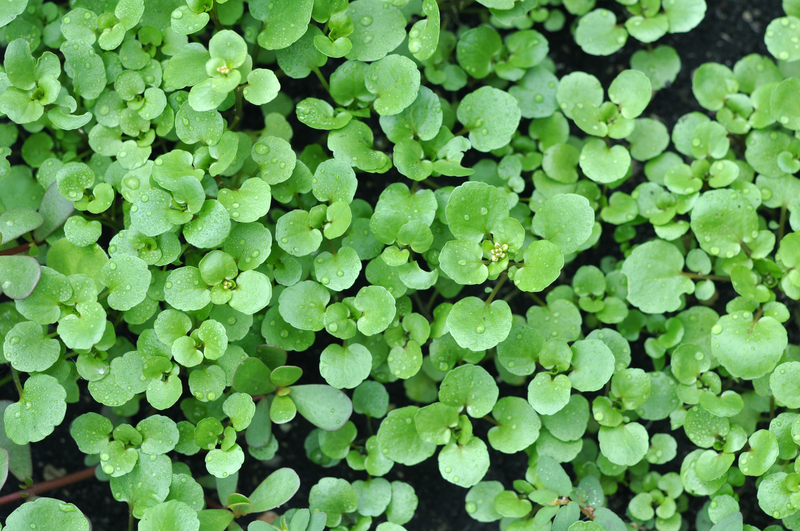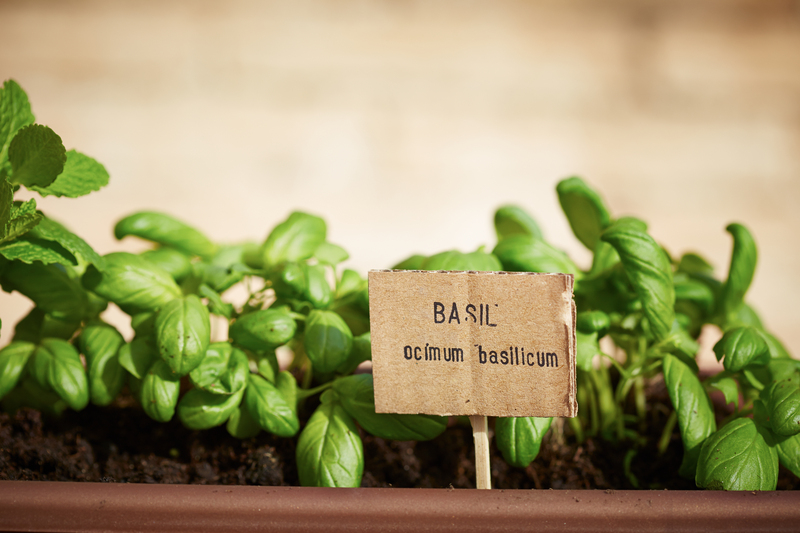Revolutionize your garden with containers
Posted on 04/06/2025
Revolutionize Your Garden with Containers: The Ultimate Guide
Are you ready to give your outdoor space a dramatic makeover? Revolutionizing your garden with containers is one of the most flexible, creative, and rewarding ways to add color, texture, and even sustainability to your home environment. Whether you have a sprawling backyard or just a small balcony, container gardening offers endless possibilities for every level of gardener.

Why Container Gardening is a Game-Changer
Container gardening isn't new, but it's fast becoming the preferred gardening method for people everywhere. The modern gardener is turning more often to containers as a means to defeat poor soil, awkward layouts, and lack of space. With pots, planters, and imaginative containers, you can turn even the most challenging area into a lush, productive oasis.
- Versatility: Plant a single specimen or a whole bouquet in a container.
- Flexibility: Move your container plants with the sun, or shelter them from storms and frost.
- Accessibility: Gardeners with limited mobility can elevate containers to easy-to-reach heights.
- Beauty: Artistic arrangements bring immediate interest and appeal.
- Pest Control: Isolating plants helps prevent disease and keep pests at bay.
The Many Faces of Container Gardens
The term container garden refers to any planting that occurs in a pot, barrel, trough, or even unconventional items such as boots, sinks, and wheelbarrows. Let's explore some of the most popular types:
- Flower-filled pots: Annuals and perennials that bring blooms all season.
- Edible container gardens: Produce herbs, vegetables, and even fruit trees in planters.
- Mixed arrangements: Combine foliage, cascading vines, and vertical elements for striking displays.
- Miniature landscapes: Create themed fairy gardens or Zen spaces in large bowls.
Choosing the Right Containers: Form Meets Function
One key to revolutionizing your garden with containers is selecting the perfect vessel for your needs. The options are stunningly diverse, but keep these essential factors in mind:
Material Matters
- Ceramic and Terracotta: Classic looks, but heavy and can be prone to cracking in cold climates.
- Plastic and Resin: Lightweight, affordable, and come in countless shapes and colors.
- Wooden Planters: Great insulation for roots but require occasional maintenance.
- Metal Tubs and Troughs: Add modern or rustic flair, though they can heat up and cool down quickly.
Tip: Make sure your containers have proper drainage holes. Gardening in containers without drainage leads to root rot and plant stress.
Size and Shape Considerations
- Match the size of your container to the plant's mature root system.
- Deep-rooted plants (like tomatoes) need deep pots; shallow-rooted herbs do fine in smaller bowls.
- Consider vertical containers and wall planters to maximize space, especially in small gardens or balconies.
Creating a Thriving Container Garden
Soil and Drainage
Forget trying to use garden soil in your pots! For the best results, always use a high-quality potting mix. This ensures:
- Proper aeration and moisture retention
- Freedom from pests, weeds, and diseases
- Maximum nutrient available for plant roots
Layer the bottom with a few inches of gravel or broken pottery only if your container has no drainage holes.
Otherwise, this step can restrict water flow and create soggy conditions.
Watering and Nutrition
Plants in containers rely on you for consistent hydration and feeding:
- Check moisture daily, especially in hot weather. The small soil volume dries out much quicker than in-ground gardens.
- Use liquid fertilizer every two to three weeks, or add a slow-release granular fertilizer at planting time.
- Be cautious of overwatering! Too much water is a common mistake and leads to root rot.
Design Secrets for Stunning Container Gardens
Anyone can plop a petunia in a pot, but to revolutionize your garden with containers, aim for eye-catching design. Use these top tips:
The 'Thriller, Filler, Spiller' Formula
- Thriller: A tall, dramatic centerpiece plant for height.
- Filler: Bushy or mounding plants to fill out the arrangement.
- Spiller: Trailing or cascading plants to soften edges and flow over the sides.
Example: For a sunny spot, try a red canna lily as the thriller, petunias as fillers, and sweet potato vine for the trailing spiller.
Color Coordination and Texture
- Use a harmonious color palette for a calm look, or bold contrasts for dramatic effect.
- Combine different leaf shapes and textures for visual intrigue.
- Ornamental grasses, succulents, and ferns are excellent choices for diverse foliage.
Containers for Every Season
Keep your container garden fresh throughout the year with seasonal transitions.
- Spring: Bulbs and cool-season flowers like pansies.
- Summer: Vibrant annuals and tropicals.
- Autumn: Mums, ornamental cabbages, and sedum shine.
- Winter: Hollies, evergreens, and displays of branches add structure and interest. Use frost-proof containers for year-round beauty.
The Best Plants for Container Gardens
Flowers
- Petunias, marigolds, geraniums, and begonias bring continual color all summer long.
- Dahlias and lilies provide drama and elegance in larger containers.
Herbs
- Basil, rosemary, parsley, and thyme thrive in pots near the kitchen door.
- Mint is best grown in containers to keep it from taking over your garden.
Vegetables
- Tomatoes, peppers, and eggplants perform particularly well in large pots.
- Leafy greens like lettuce, spinach, and Swiss chard can be tucked into shallow containers.
Fruit
- Strawberries cascade from hanging baskets or tiered pots.
- Lemon, lime, and dwarf apple trees can be grown in large containers in sunny spots.
Ornamentals
- Hostas and ferns offer lush, green appeal in shady corners.
- Succulents require little water and look stunning in modern, shallow planters.
Creative Ideas to Transform Your Containers
- Upcycled Materials: Transform old wheelbarrows, wine crates, teapots, or boots into quirky planters that spark conversation.
- Vertical Gardening: Use pallet planters, wall pockets, or stacking pots to maximize small spaces and add living art.
- Theme Gardens: Plant a pizza garden with tomatoes, basil, and oregano; create a healing herb pot; or design butterfly-friendly arrangements.
- Water Features: Fill watertight containers with aquatic plants and a small fountain pump for a soothing accent.
Don't be afraid to experiment! The beauty of container gardening is that nothing is permanent--you can easily rearrange or replant for a fresh look.
Maintenance Tips for Healthy Container Gardens Year-Round
- Refresh soil annually and repot when plants outgrow their containers.
- Inspect regularly for pests and remove dead flowers to encourage more blooms.
- Rotate containers for even sun exposure and full, symmetrical growth.
- In freezing climates, move delicate pots indoors or provide insulation to prevent cracking and root death.
Common Mistakes and How to Avoid Them
If you want to revolutionize your garden with containers, beware the most common mistakes:
- Underestimating Size: Too-small containers restrict root growth and dry out too quickly.
- Poor Drainage: Always ensure your pots drain well to avoid soggy roots.
- Overcrowding: Give each plant enough space for air circulation and growth.
- Neglecting Soil: Container soil should be replaced regularly for optimal plant health.
- Ignoring Light Requirements: Match your plant selection to the sun exposure in your garden area.
The Eco-Friendly Side of Revolutionary Container Gardens
Did you know that container gardens also support a more sustainable and eco-conscious lifestyle?
- Repurpose household items as planters to reduce waste.
- Collect rainwater to hydrate your containers naturally.
- Grow your own food, reducing your carbon footprint and grocery bills.
- Support bees, butterflies, and other pollinators by planting nectar-rich flowers.
Revolutionizing Small Spaces with Container Gardens
Even if you only have a small patio, balcony, or rooftop, container planting lets you maximize every inch. Here are some must-try methods for the urban or apartment gardener:
- Hanging Containers: Suspend baskets from ceilings, eaves, or sturdy fences for dramatic, space-saving displays.
- Stacked and Tiered Planters: Use multi-level plant stands to create vertical interest and maximize planting area.
- Rail Planters: Perfect for balconies, rail planters let lush greenery overflow with ease.
- Mobile Containers: Choose containers on wheels to shift plants as sunshine shifts or seasons change.

Frequently Asked Questions About Container Gardens
Q: How often should I water my container plants?
A: It depends on the plant, container size, and weather, but most container gardens need to be checked and likely watered every 1-2 days in hot weather. Stick your finger an inch into the soil; if dry, water thoroughly.
Q: Can I grow vegetables in containers?
A: Absolutely! Many vegetables thrive in pots. Choose deep containers for root crops and large-fruited veggies like tomatoes. Herbs and leafy greens do well in shallower ones.
Q: What's the best soil for container gardening?
A: Always use a high-quality potting mix, not garden soil. These mixes are specially formulated for drainage, oxygenation, and nutrients.
Q: How do I fertilize my container plants?
A: Liquid fertilizer every 2-3 weeks or slow-release granules mixed in at planting keep your plants lush. Always follow the product instructions and observe your plants for best results.
Conclusion: Revolutionize Your Garden with Containers Today!
If you're ready to revolutionize your garden with containers, there's no better time to start! Experiment with color, texture, and plant types to craft your unique outdoor haven--no matter the space or climate.
Remember:
- Choose the right container, soil, and plants for your environment.
- Water wisely and feed appropriately for long-lasting beauty and productivity.
- Keep things fresh by changing arrangements seasonally.
- Let your creativity shine! Container gardening puts the power of transformation in your hands.
Revolutionizing your garden with containers is not only fun and rewarding, but it can also support sustainability, health, and well-being for you and the planet. So, gather some pots, pick your favorite plants, and watch your garden bloom like never before!

